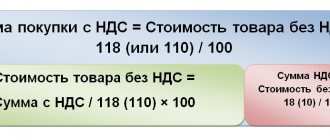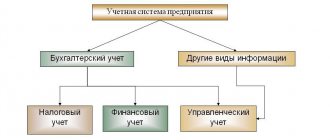This review is devoted to the procedure for calculating income tax and filling out the corresponding declaration in 1C 8.3, 1C: Accounting program. It is assumed that the reader is already familiar with the principles of PBU 18/02. It is impossible to cover the entire Chapter 25 of the Tax Code of the Russian Federation in one article; we will focus on the main points. Also, providing comprehensive automation services for accounting on 1C:Enterprise since 2003, we have developed an algorithm for calculating income tax using the 1C program.
The income tax return in 1C reflects income and expenses accepted for calculating the tax base for income tax. The procedure for filling it out is described in detail in the Order of the Federal Tax Service MMV-7-3 / [email protected] dated 10/19/2016.
The tax period for all companies is a calendar year, the deadline for submitting the annual return is March 28. If the last day for submitting the declaration falls on a weekend, it is postponed to the next working day.
There are some nuances regarding reporting periods and advance payments:
Organizations with small turnover submit reports during the year based on the following results:
- 1 quarter until April 28;
- Semester until July 28;
- 9 months until October 28th.
At the same time, payments are made on accrued profits, which are considered advance payments, because The full tax amount will be generated only at the end of the year. Sometimes situations are possible when the amount of advance payments paid during the year exceeds the tax accrued at the end of the year, then the organization has an overpayment of tax.
If an organization’s average quarterly revenue for the last 4 quarters is equal to or exceeds 15 million rubles, then they pay monthly advance payments of income tax until the 28th, formed by calculation (an example of the calculation will be later). The deadline for submitting reports is similar to that given in the previous paragraph. If at the end of the quarter the amount of advance payments is less than the amount of actually accrued tax, the delta will have to be paid additionally.
The procedure for making an advance payment of income tax every month is not always beneficial for the organization. There are situations when there is no profit, but you have to pay advances. In this case, the organization can switch to the calculation procedure based on the actual profit received: at the end of each month it will be necessary to submit reports to the tax authorities.
To switch to this regime, you must submit the appropriate application before the start of the calendar year, then you will not be able to change the regime until the end of the tax period.
Accounting policy settings for income tax
Each enterprise must develop an accounting policy regarding profit taxation that fully takes into account the specifics of its activities.
Read more Income tax accounting policy designer
Setting up accounting policy parameters for income tax is carried out in the Main section - Settings - Taxes and reports - Income Tax tab.
Learn more about each setting
Receipt and acceptance of fixed assets for accounting
Let's move on to the next document. In January, the company purchased equipment (Fig. 4).
Fig.4
Of interest is the document according to which the machine is accepted for accounting (Fig. 5).
Fig.5
To reduce tax payments, we use the right to bonus depreciation (Fig. 6).
Fig.6
In 1C, the depreciation bonus is taken into account in a special account KV (Fig. 7).
Fig.7
We will see later how exactly the use of bonus depreciation will reduce the tax.
Organization of tax accounting in the program
Tax accounting in 1C is carried out on accounting accounts (chart of accounts 1C). Accounts that reflect the amount of NU in transactions have the Tax attribute (for income tax) .
See also Income tax: review of the main legislative innovations of 2021 (from the recording of the broadcast on December 26, 2021)
Separation of income and expenses in NU
Income at NU is divided into:
- income from sales (revenue) - income reflected in account 90.01;
- unrealized income - income reflected in account 91.01;
- not taken into account in the NU.
Expenses at NU are divided into:
- costs associated with production and sales:
- straight;
- indirect;
- unrealized expenses;
- not taken into account in the NU.
Direct expenses include the costs defined in the List of direct expenses in the accounting policy settings for tax accounting.
Indirect costs include:
- costs reflected under Cost Items and not defined in the List of Direct Costs ;
- costs reflected under Items of other income and expenses (account 91.02), Type of item for which: Taxes and fees ;
- Other indirect costs;
- Other operating income (expenses).
The remaining expenses in account 91.02 are considered non-operating.
Unaccounted expenses and income in NU
To generate movement in tax accounting accounts, it is also necessary that when reflecting costs and income, their analytics ( Cost Items , Items of Other Income and Expenses ) are taken into account in NU.
Expenses and income that are not taken into account are reflected in the subaccounts of the off-balance sheet account NOT .
If the Expense Type is set - Not taken into account for tax purposes , then such costs will be reflected in NU as expenses not taken into account in the Dt subaccounts NOT .
Income and expense items are used to record both costs and income. To reflect income and expenses not taken into account in tax accounting, Accepted for tax accounting .
The type of expenses affects which off-balance sheet account is used by 1C for non-accounted expenses and income.
PBU 18/02
If the organization applies PBU 18, indicate this in the accounting policy settings for accounting policies: section Main - Settings - Accounting policy.
Transactions will automatically reflect temporary and permanent differences if the control unit and control unit have discrepancies.
The formation of deferred liabilities (assets) is carried out at the Closing of the month.
Receipt of goods
First, we will generate documents that take into account expenses.
In Fig. 2 we see the goods receipt document.
Fig.2
Let's see what transactions were formed during the execution of this document (Fig. 3). The figure shows two groups of transactions – accounting and tax. In the group of tax transactions there are three lines at once - for the amount for tax accounting (TA) and for the amounts of permanent and temporary differences (PR and TD).
In our version, no differences are formed, so the lines are empty. But in other cases, the differences will be calculated and will take part in the formation of the tax base. 1C is programmed to calculate all amounts, as well as control the main formula:
BU = NU + PR + VR
Fig.3
It is worth paying attention to one more important point. The amount of 5400 for tax accounting is displayed only in the “Ct Amount” column. The fact is that VAT accounts are not included in the list of tax accounts in the 1C chart of accounts, so one-sided tax transactions arise.
Since all the nuances of forming tax accounting amounts are already included in the calculation algorithms, the user does not have to worry about the correctness and completeness of the data. All that remains is to observe the actions of the 1C program.
Financial result and accrual of income tax - postings in 1C 8.3
During the tax period, record business transactions. When performing the Month Closing procedure, entries will be automatically generated to determine the financial result and calculate income tax.
If a profit is made based on the results of the tax period, the following entries are generated:
- Dt 99.01.1 Kt 68.04.1 - income tax charged.
If there is a loss based on the results of the tax period, then the following entries are generated:
- Dt 99.01.1 Kt 68.04.1 (reversal) - income tax adjusted.
Don’t forget to check your tax accounting using the Income Tax Accounting Analysis : section Reports - Report Analysis - Income Tax Accounting Analysis.
See also:
- Setting up accounting policies in 1C 8.3 OSNO
- Methods for distributing indirect costs in 1C 8.3: step by step for beginners
- Errors of previous years in the income tax return (from the broadcast recording dated October 23, 2021)
- Application for tax refund in 1C (from the recording of the broadcast dated September 07, 2021)
- Procedure for tax refund (offset) (from the recording of the broadcast dated September 07, 2021)
- Typical errors from the Federal Tax Service when submitting reports (from the recording of the broadcast on July 16, 2021)
If you are a subscriber to the BukhExpert8 system, then read additional material on the topic:
- Income tax: calculation procedure, features of accounting in 1C
- Income tax errors
- How to correctly reflect the accrual of penalties for income tax?
- Payment of income tax to the federal budget
- Payment of income tax to the republican budget
- Month Closing Algorithm – Add to Favorites
If you haven't subscribed yet:
Activate demo access for free →
or
Subscribe to Rubricator →
After subscribing, you will have access to all materials on 1C Accounting, recordings of supporting broadcasts, and you will be able to ask any questions about 1C.
Did the article help?
Get another secret bonus and full access to the BukhExpert8 help system for 14 days free of charge
Related publications
- Income tax for the 1st quarter of 2021 - changes The reporting campaign for the 1st quarter of 2021 is approaching. Tax on...
- Payment of dividends to founders: individuals and legal entities Let's consider the features of reflecting the accrual and payment of dividends in 1C...
- Future expenses in 1C 8.3 Accounting 3.0 Future expenses (FPR) is a special concept: they are not always...
- Electronic primary documents and their non-electronic duplicates - recommendations from the Ministry of Finance Electronic documents are increasingly replacing paper primary documents. But in ch….
Reflection of wages in expenses
In the meantime, let’s take into account another type of expense – labor costs. To do this, we will create a document “Reflection of salaries in accounting” (Fig. 8).
Fig.8
When conducting, both accounting and tax entries are also generated (Fig. 9).
Fig.9
Transfer of personal income tax to the budget
The deadline for paying personal income tax to the budget in most cases (including from wages) is no later than the next working day after payment of income to an individual. When paying vacation pay and sick leave, the tax can be transferred no later than the end of the month in which the employee was paid these incomes (clause 6 of Article 226 of the Tax Code of the Russian Federation). Therefore, often the day the tax is transferred does not coincide with the day it is withheld. The tax payment entry is made on the date of transfer of due payments to the budget. The following correspondence is used: D51 – K68.1.
Example
On April 15, 2021, the staff of Astra LLC were paid wages for March. The total amount of tax withheld from employees is 47,500 rubles. In addition, on the same day, vacation pay was transferred to accountant Smirnova’s card. Personal income tax on vacation pay amounted to 3,250 rubles. The tax was transferred to Astra LLC on time, and the following entries were made:
04/15/2019: D70 - K68.1 - 50,750 rubles, tax is withheld from wages and vacation pay when they are paid (47,500 + 3250 = 50,750 rubles);
04/16/2019: D68.1 - K51 - 47,500 rubles, salary tax is transferred to the budget (transferred no later than the next day after salary payment);
04/30/2019: D68.1 - K51 - 3250 rubles, personal income tax from vacation pay is transferred to Smirnova (the deadline for paying tax on vacation pay is the last day of the month).
Depreciation
We will complete the closing in three months – January, February and March. In February (Fig. 14), that is, next after the equipment is accepted for accounting, operations will be carried out to account for the depreciation bonus.
Fig.14
Figure 15 shows depreciation entries. The depreciation bonus “edited” the depreciation amount for tax accounting, resulting in temporary differences.
Fig.15
NNP accounting
To reflect records on taxes and fees in the Unified Chart of Accounts, a separate accounting account 68 is provided. To detail information on each type of fiscal burden, special sub-accounts are opened for this account. For example, 68.4 - settlements with the budget for non-governmental organizations.
Account 68 is active-passive, that is, it can have both a debit and a credit balance. Moreover, the debit balance at the end of the billing period indicates the presence of an overpayment to the state budget. A credit balance, on the contrary, indicates the presence of debt.
Transactions are reflected by postings:
| Operation | Debit | Credit |
| Income tax accrued (posting) | 99 | 68 |
| Income tax paid (posting) | 68 | 51 |
| The offset of overpayments from previous years is reflected (by decision of the Federal Tax Service) | 68 | 68 |
| Refund of overpayment for NNPO reflected | 51 | 68 |
Do not forget that advances for income tax should be reflected in accounting; the postings will be the same: Dt 99 Kt 68 in the “NNP” subaccount.
IMPORTANT!
NNP is calculated on an accrual basis. This means that when calculating payments for the next reporting period (month, quarter), you should not indicate the entire amount of the advance, but only the difference between the amounts accrued for the current period and the previous one. In other words, the amount of NPT accrual must correspond to the data in Section 1 of the tax return for NPT.
Entering data for the declaration
It is recommended to use standard documents to record income and expenses.
Fig.4
The second rule is that it is important not to make mistakes when filling out income and expense analytics (cost accounts, cost items, item groups, divisions).
For example, in the document “Production Report for a Shift”, the product groups on the “Products” and “Materials” tabs must correspond to each other (Fig. 5), and the cost item must be present in the register “Methods for determining direct production costs of NU”
Fig.5








